

Max Davies
2026 GWM Haval Jolion price and specs
5 Hours Ago
The Toyota RAV4 has swiftly become the nation's top-selling SUV, and the Cruiser hybrid is perhaps the best variant. What a massive improvement.
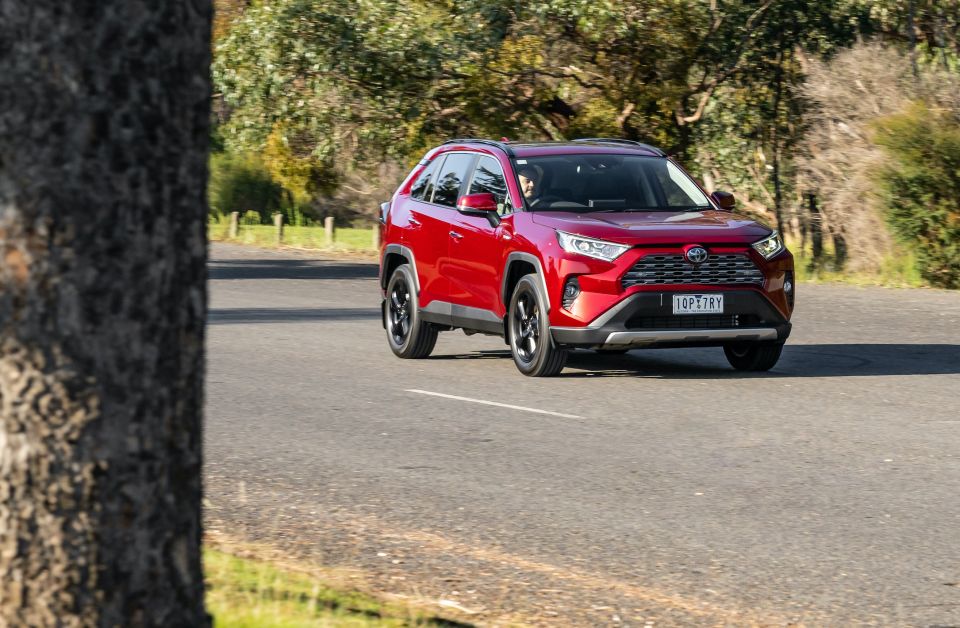
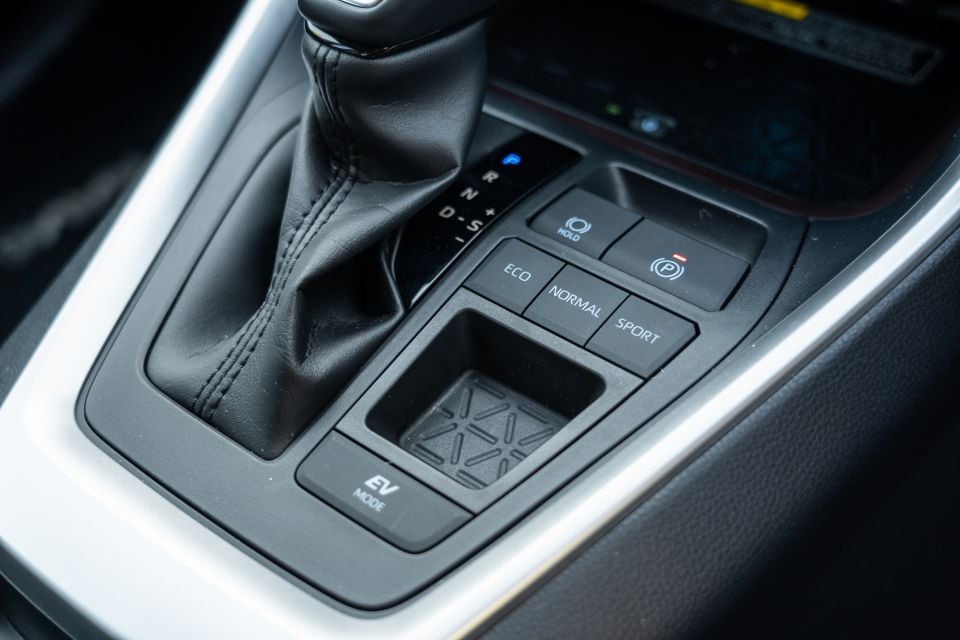

Senior Contributor
New from
$46,415
excl. on-roads

Senior Contributor
New from
$46,415
excl. on-roads


Senior Contributor
New from
$46,415
excl. on-roads

Senior Contributor
New from
$46,415
excl. on-roads
Quickly see how this car stacks up against its competition. Select any benchmark to see more details.
Where expert car reviews meet expert car buying – CarExpert gives you trusted advice, personalised service and real savings on your next new car.
Toyota has been the world’s leading proponent of petrol-electric hybrid drivetrains for decades, improving its system with each iteration to make it more efficient, smoother, and (most importantly) cheaper.
While the technology is now proven in cars such as the taxi-friendly Prius and Camry, it’s the chunky new Toyota RAV4 tested here that’s gaining serious traction.
It has eclipsed the Mazda CX-5 to become Australia’s most popular SUV, which is a noteworthy achievement. But what’s more interesting is the fact about 60 percent of these sales are the hybrid version.
That’s clear evidence that everyday drivers have embraced this technology in droves.
There are three equipment grades available. The base Toyota RAV4 GX hybrid kicks off from $35,490 before on-road costs, climbing to $38,490 for the GXL, and up to $41,990 before on-roads for the Cruiser tested here.
If you want the dual-motor all-wheel drive (AWD) option, it’s a further $3000 premium on each.
The hybrid engine/motor system commands a $2500 premium over the regular 2.0-litre petrol four, which makes less power and uses more fuel.
For a range-topping model, a price of $42,000 before stamp duty, registration, and delivery costs is very reasonable, given some competitors top out closer to $50,000. And you don’t need to worry about falling prey to option-box honeypots. The only thing you can option is metallic paint for $600.

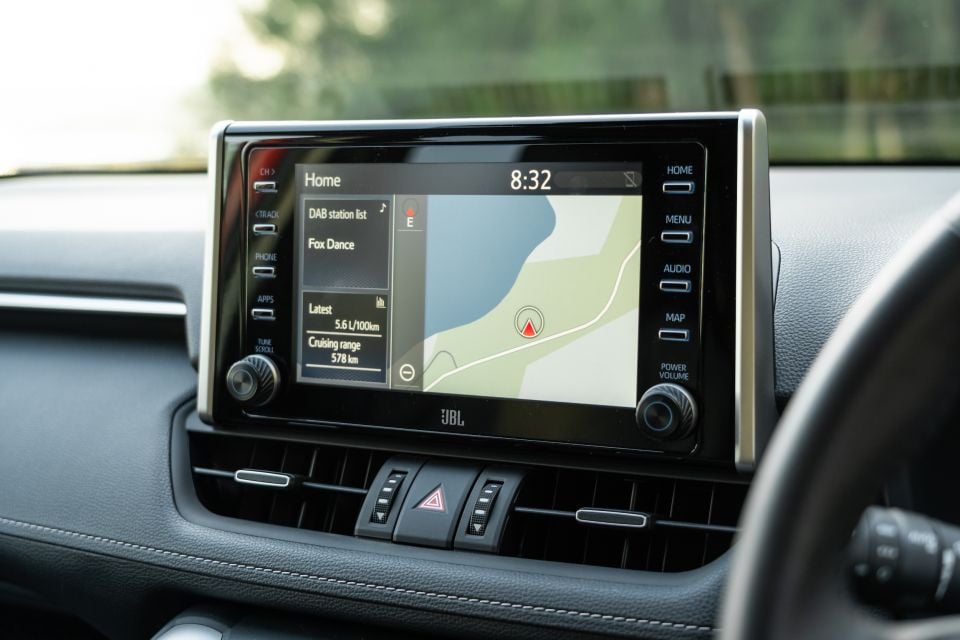
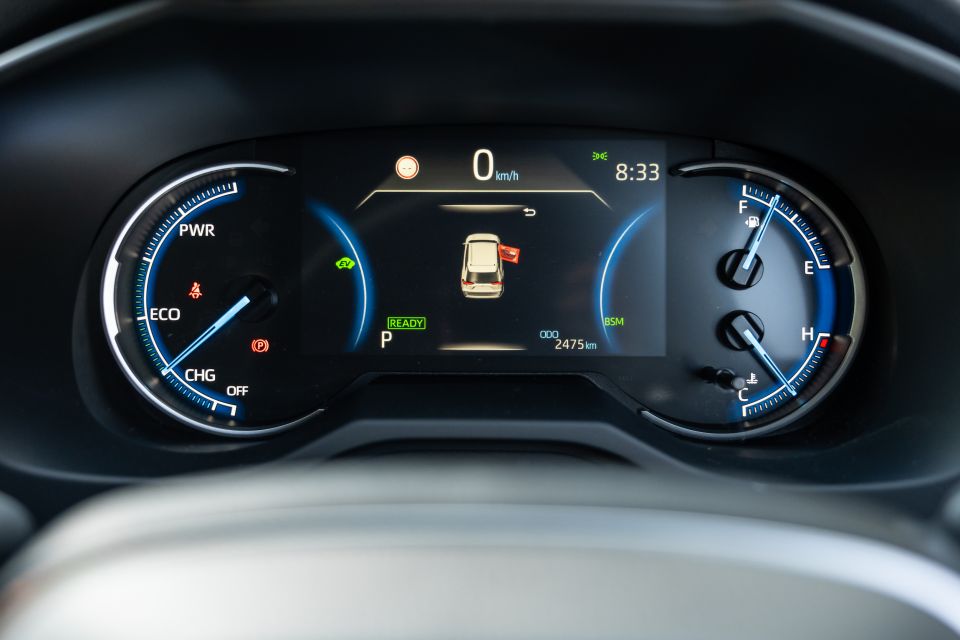
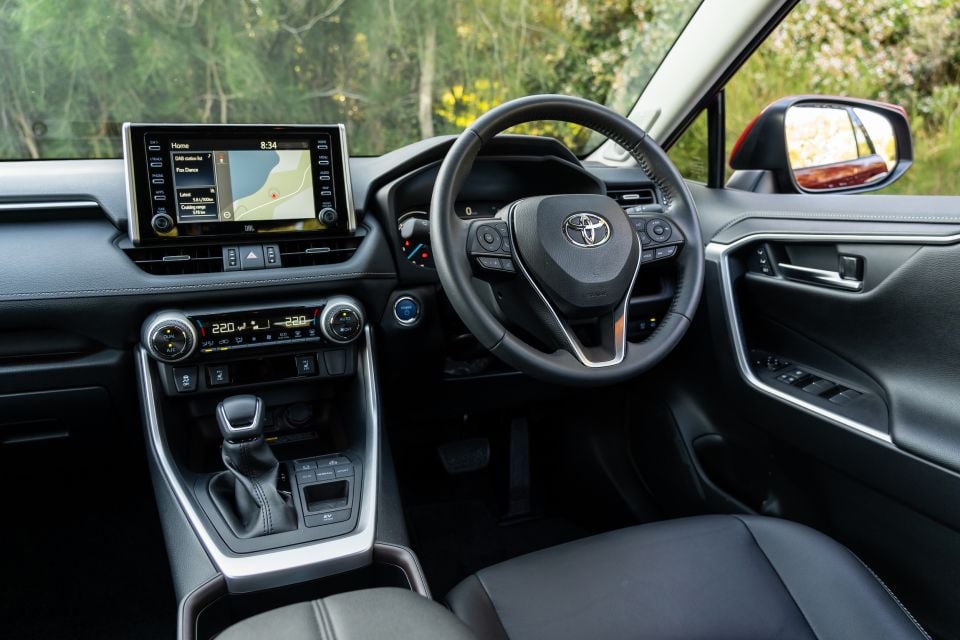
Buy your new car without the stress. It's fast, simple and completely free.

Great service from Travis and team, second time I have used this business would not hesitate to recommend them to anyone
Craig C.
Purchased a Ford Ranger in Sunshine Coast, QLD
CarExpert helped Craig save thousands on his Ford Ranger, now let us save you on your next new car.
Find a dealEvery Toyota RAV4 comes with 17-inch wheels, LED headlights, running lights, and tail lights, auto-folding side mirrors, parking sensors front and rear, rain-sensing wipers, dual-zone climate control, a proximity key fob, an 8.0-inch touchscreen, parking camera, Apple CarPlay and Android Auto, Bluetooth, and satellite navigation with SUNA traffic updates.
Standard safety features across the line-up include seven airbags, autonomous emergency braking that detects cars, pedestrians and (in the daytime) cyclists, blind-spot monitoring, rear cross-traffic alert, lane-departure alert and keeping aid, road-sign recognition, and active radar-guided cruise control.
The mid-range GLX grade adds 18-inch wheels, privacy glass, roof rails, a wireless phone charger, four extra USB ports to make five in total, and an auto-dimming rear-view mirror.
Our Cruiser version has all of these features as well as a tilting and sliding sunroof that covers front occupants, an electric tailgate, leather seat trim, front-seat heating, driver’s seat memory presets and power adjustment, a 7.0-inch trip computer display, a nine-speaker JBL sound system, a 360-degree camera, and ambient night-lighting.
There’s precious little missing from the spec sheet. The only thing that stands out is the lack of a head-up display (HUD) projecting on the windscreen, which is available in the cheaper Corolla and the Camry.
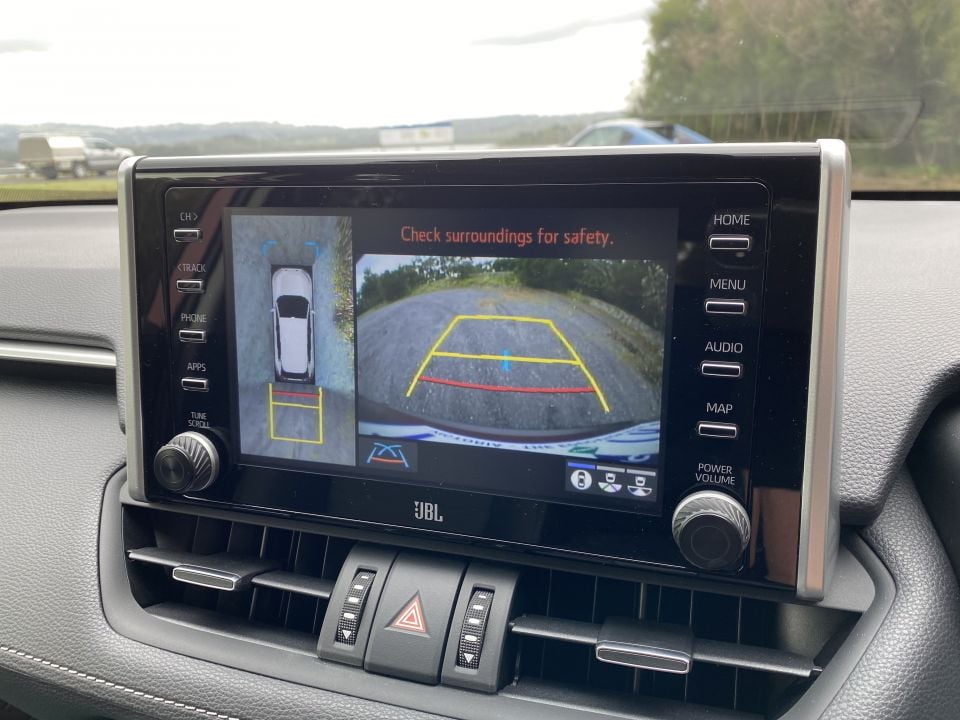
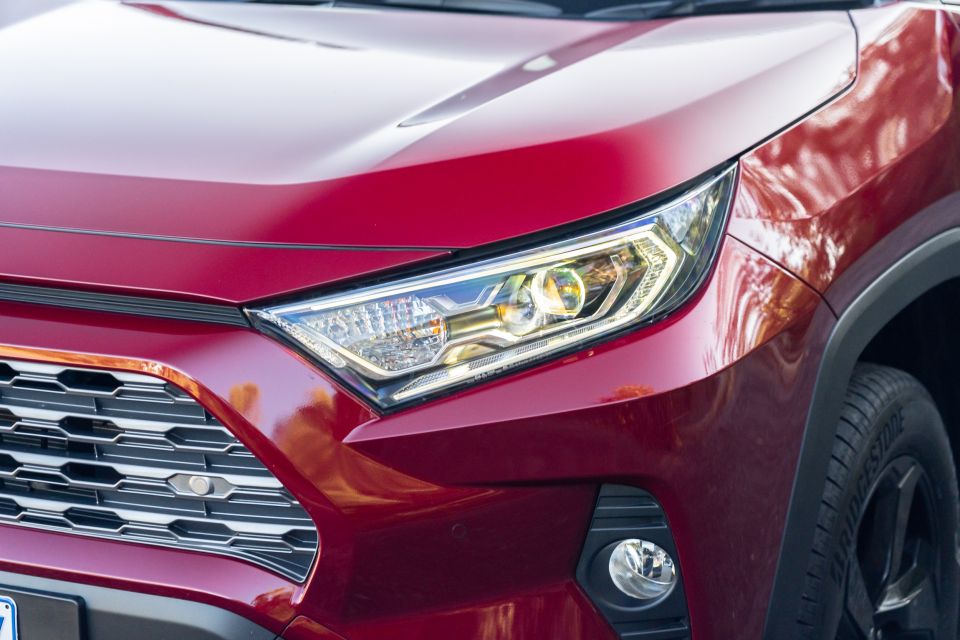
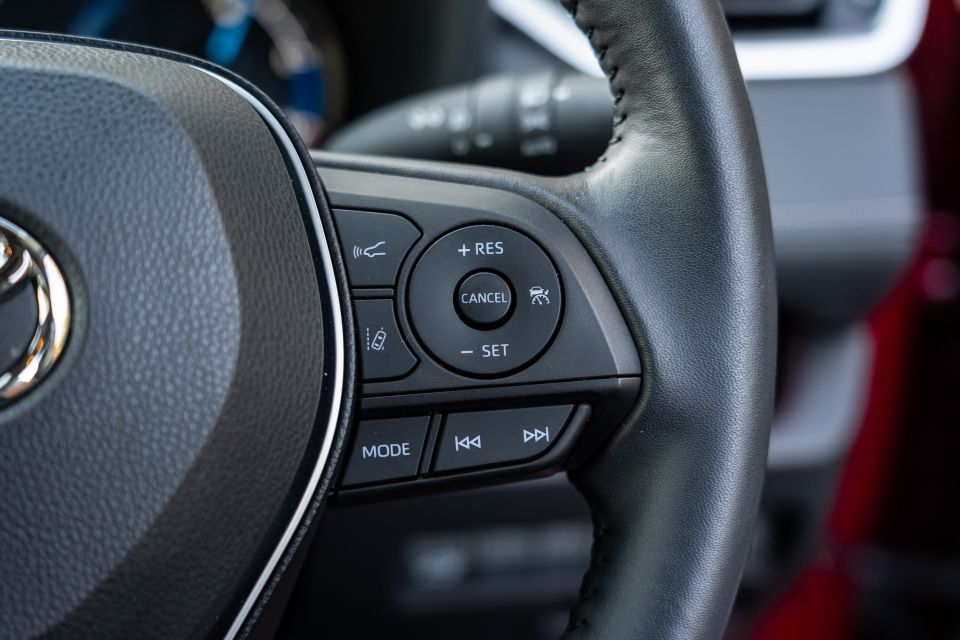
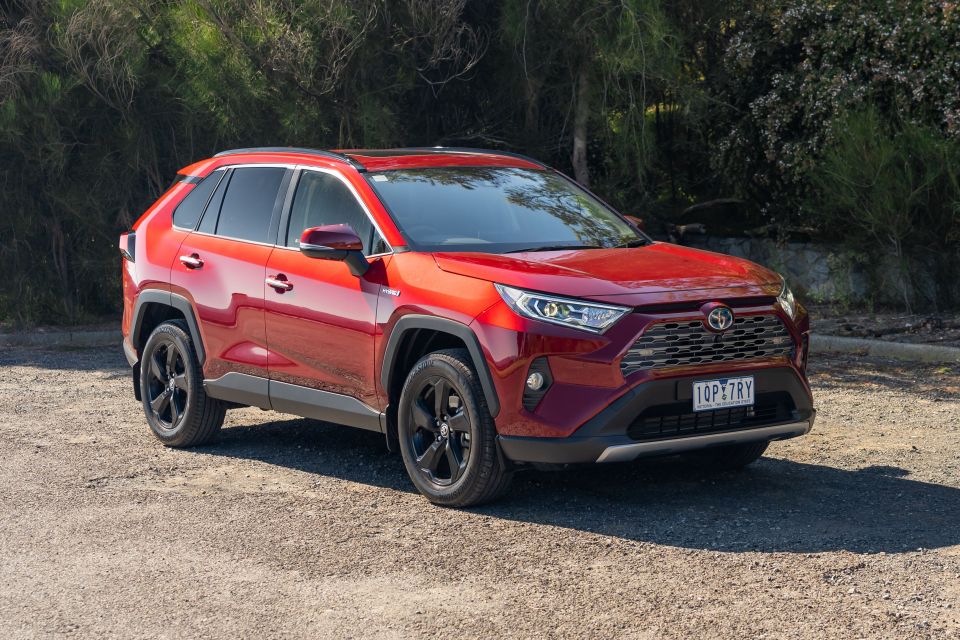
The features listed earlier means it’s well-covered in terms of active safety fare. It also offers three top tethers and two ISOFIX anchor points for child seats.
Crash-tester ANCAP awarded the Toyota RAV4 a five-star score against its 2019 testing criteria. It achieved 93 per cent in adult occupant protection tests, 89 per cent for child occupant protection, 85 per cent for vulnerable road user protection, and 83 per cent for safety assist features.
In other words, there’s no reason to doubt that this is a safe way to carry your family.
For a full breakdown of how ANCAP operates and what each score means, check out our feature.
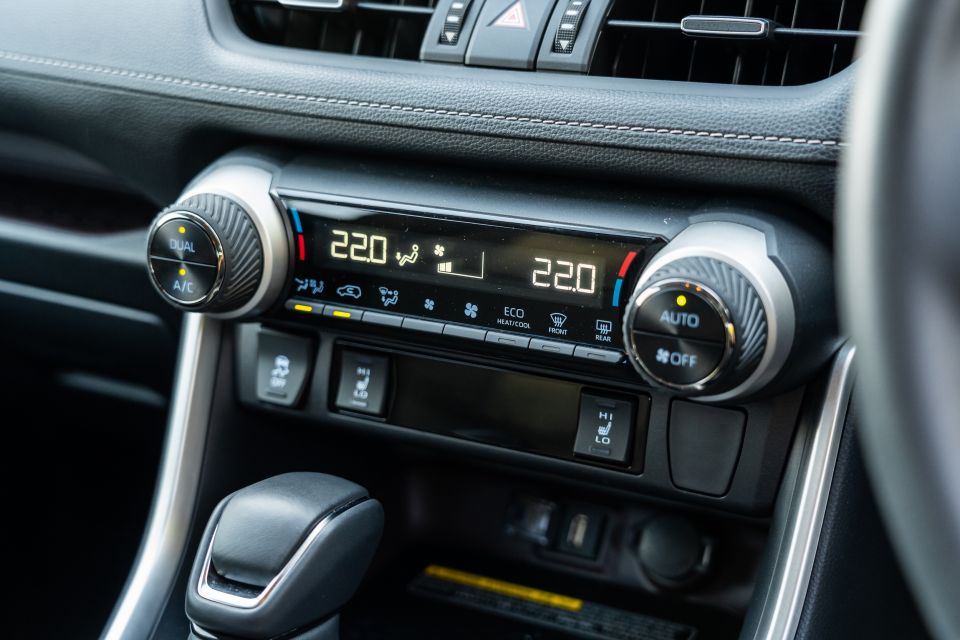


The interior layout is simple to work out. The front seats are well bolstered, and both they and the steering column have ample breadth of adjustment. You sit up quite high, and are afforded quite generous outboard visibility.
The instrument binnacle before you comprises analogue fuel and eco gauges, a digital speedo, and a configurable trip computer displaying active safety functions, fuel use, audio functions, settings, and more.
These are largely controlled by damped buttons on the leather-wrapped wheel.
While Toyota doesn’t beat you over the head with stylistic accoutrements that scream “hybrid”, the blue needles and green display font are subtle nods, alongside the blue exterior badging and small decals.
The 8.0-inch touchscreen is mounted high up, and flanked by eight shortcut buttons and two rotary dials to change track and volume. The home screen shows the sat-nav, plus two other tiled sections such as fuel use and audio settings.
It’s additionally controlled by a middling voice control system and displays an above-view camera.
If you’re anything like me though, you’ll use the Apple CarPlay and Android Auto phone mirroring functions to stream music and podcasts, and for Waze or Google Maps.
The audio system sounds pretty good playing music, but the quality of phone calls in either Bluetooth or CarPlay modes proved disappointingly tinny. That needs an update…
Below this sit the climate control settings, dominated by chunky rubbery dials that are quite satisfying to twirl. Below this is a wireless charging pad, giving way to a gear shifter flanked by driving mode buttons, Auto Hold anti-creeping function, and the electric parking brake.
There’s a heap of storage, albeit not as much as the CR-V. You get a decent-sized tiered console, big door bins, two nicely sized cup holders, and a rubberised open section above the glovebox. There’s also a sunglasses cubby mounted just ahead of the glass sunroof.
In typical Toyota fashion, it’s all screwed together perfectly at the factory in Japan.
Compared to the old Toyota RAV4 this new one has an additional 40mm of front shoulder room, 49mm more rear toe room, and a 65mm longer and 50mm wider cargo area. The roof is 30mm lower, but the hip point has been dropped by 15mm to reduce the headroom deficit.
The back seats offer plenty of legroom, headroom, and knee room for my 194cm frame behind my own driving position, with the sunroof barely affecting head space. The toe room under the seat ahead is also plentiful, and the seats themselves recline. The pitch of the base is quite angled, and there’s good under-knee support.
There is a USB point for all five occupants in the RAV4, and rear air vents and reading lights, plus door bins and a flip-down centre armrest with cup holders.
These seat backs fold quite flat, taking boot space from an already high-for-the-segment 580L to something positively van-like. The cargo area sports a retractable cargo cover and a 12V socket, but lacks shopping hooks and shortcut levers to fold the back seats.
While there’s no full-size spare tyre, at least there’s a temporary space-saver rather than the increasingly-common repair kit comprising a compressor and spray-on goo.
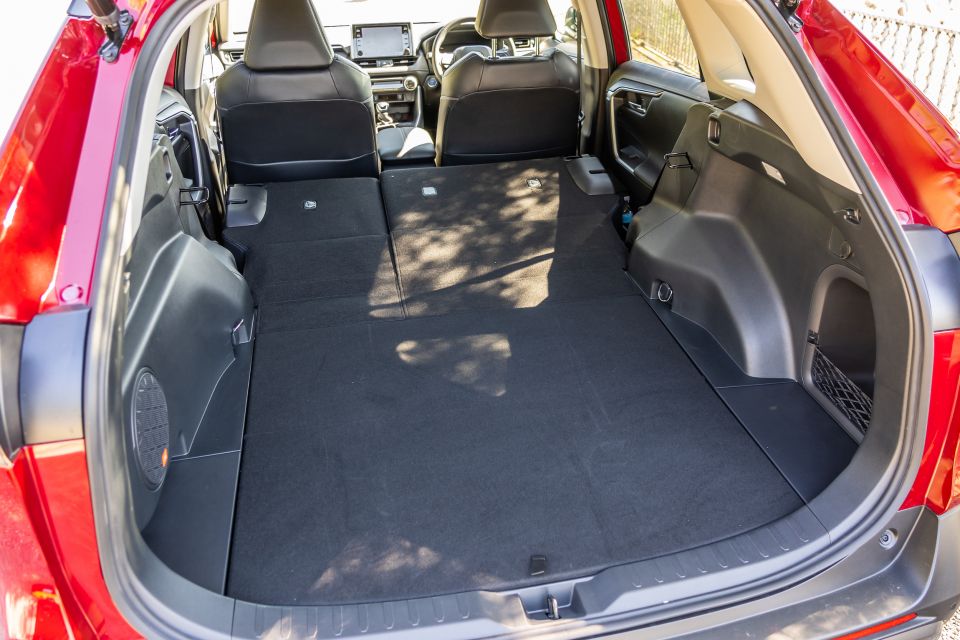
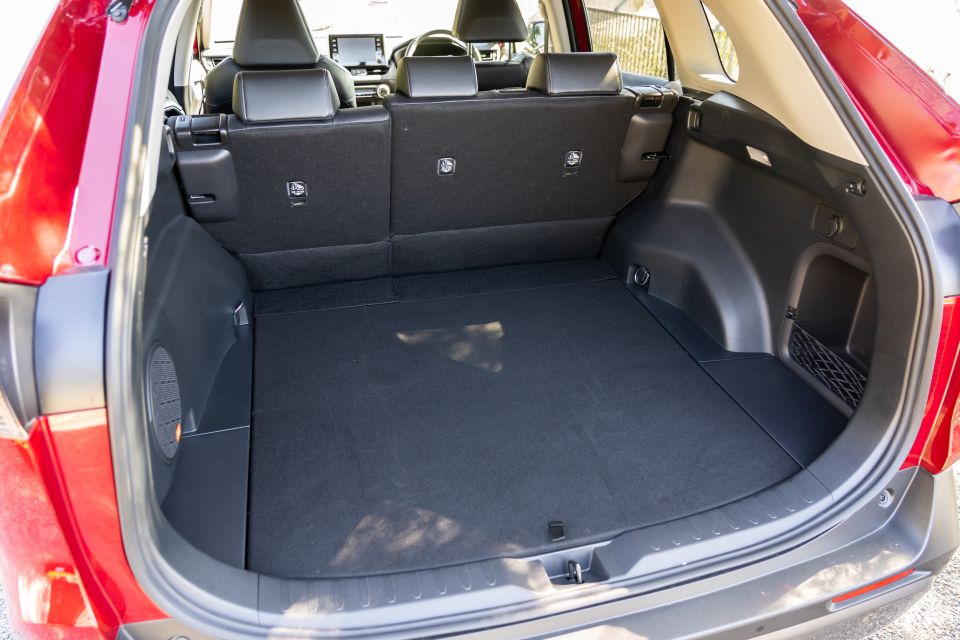
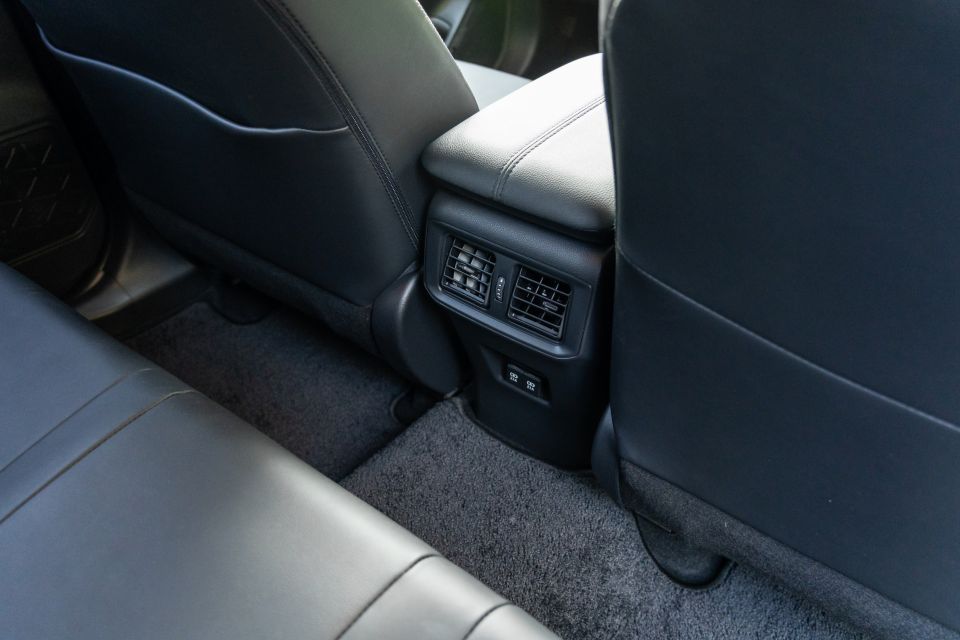
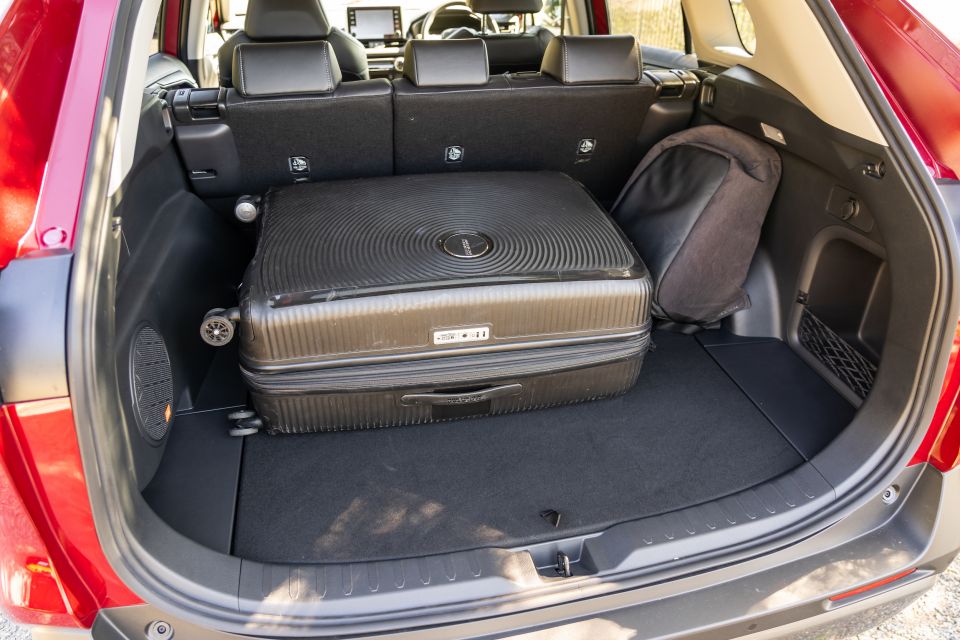
The drivetrain pairs a high-compression and Atkinson Cycle 2.5-litre naturally-aspirated petrol engine making 131kW of power and 221Nm of torque, with an 88kW/202Nm electric front-wheel drive motor, a second motor that acts as a battery-charge generator, an e-CVT automatic, and a nickel-metal hydride battery pack.
Toyota favours this type of battery over lithium-ion since it’s cheaper and there is good supply.
The RAV4 hybrid in all-wheel drive form gains an extra 40kW motor that drives the rear axle, enabling the hybrid system to deliver up to 80 per cent of the available torque to the rear wheels.
While Toyota doesn’t cite peak torque figures, the maximum combined power is 160kW since the two power sources do not work at maximum outputs concurrently. But even 160kW is much more than the power figures of most competitors such as the CX-5, Nissan X-Trail, and Honda CR-V.
In terms of performance data, Toyota claims combined-cycle fuel consumption of just 4.7 litres per 100km, using basic 91 RON petrol, and CO2 emissions of 107 grams per km.
The best I achieved was 4.8L/100km and the worst 5.6L/100km, and believe me when I say not all of my driving was gentle and economy-minded.
Moreover, belying stereotypes that say hybrids are best in town, you’ll likely be using around 5.0L/100km at 110km/h. Given the tank is 55L, you get a diesel-like driving range of around 1000km between refills.
It’s not slow either. I managed a few 0-100km/h times averaging 8.5 seconds. It’s never engaging per se, and demonstrates classic CVT droning under heavy throttle, but the mid-range response and instant torque delivery is notable and frankly surprising.
One major disappointment is the towing capacity. While the AWD hybrid can tow a 1500kg braked trailer, the 2WD one we have here is only rated to tow 480kg. Pointless.
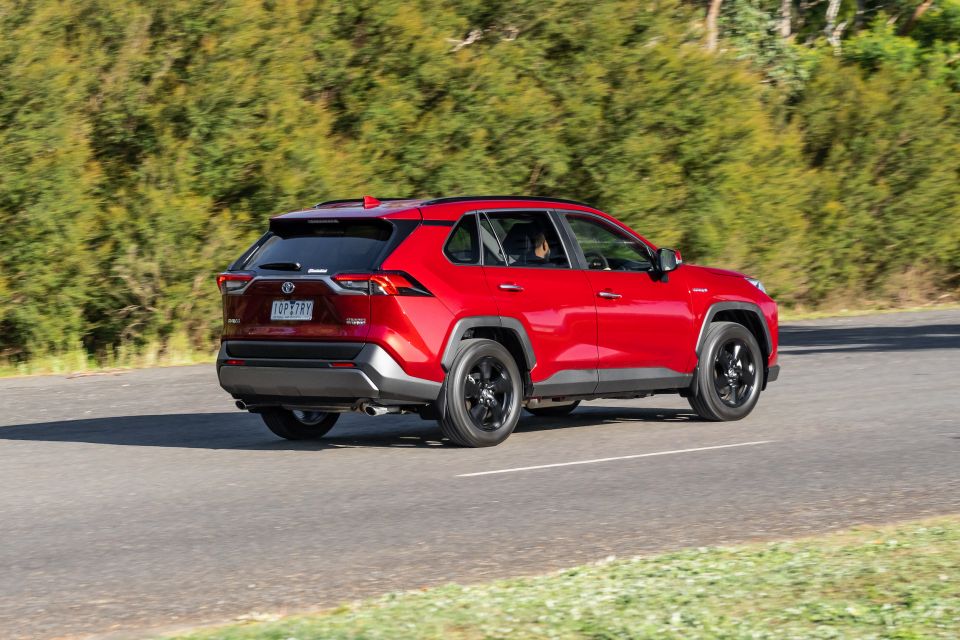
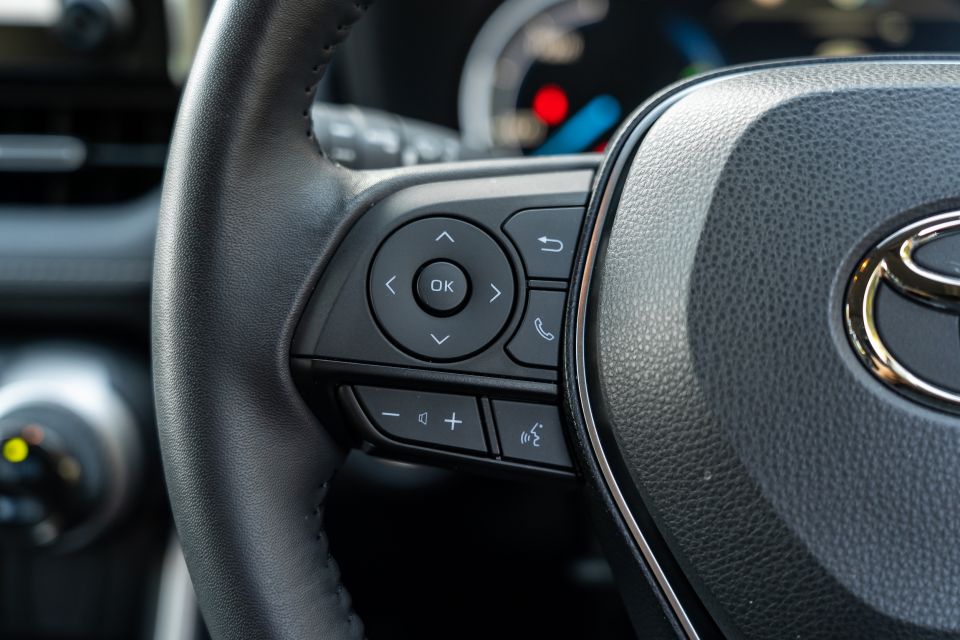
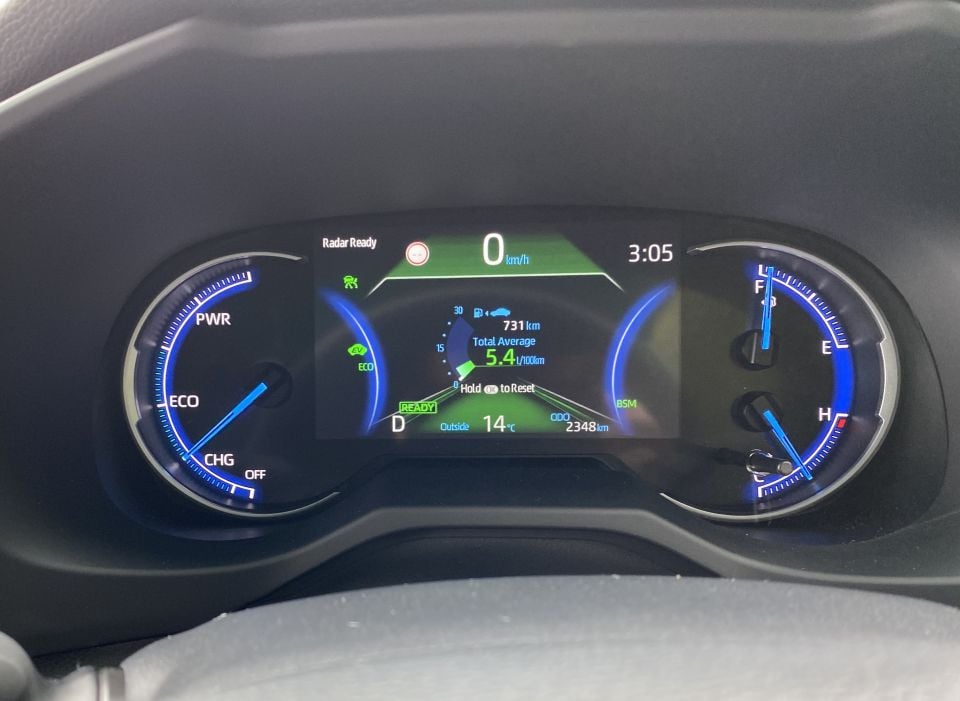
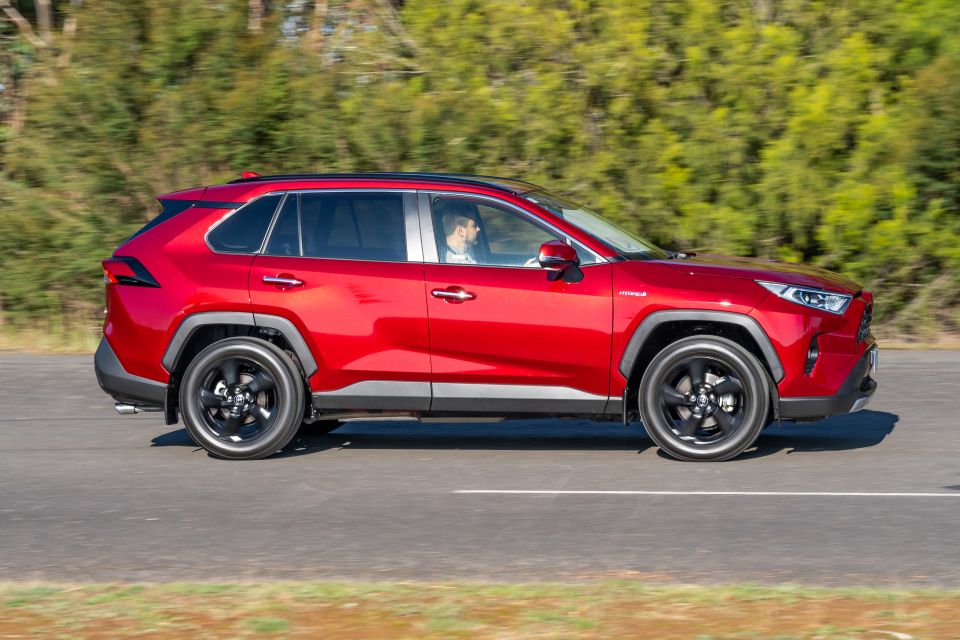
Like most hybrids the drivetrain is silent on most startups and when you’re stationary in traffic, since the battery powers ancillaries. The battery and motors also power the car from startup to 40km/h, provided your throttle inputs aren’t too stabby, and in reverse as well. You can drive for a few kilometres as a majority EV in urban areas.
When you’re going much faster and lift off the throttle to either coast down a hill or prepare to stop for a traffic light, the petrol engine once again decouples, with the batteries powering essential functions and the recuperation system capturing potential waste energy to recharge the batteries.
When you’re driving normally, the petrol engine kicks in quietly and without any obvious vibrations, and the CVT does a good job of keeping engine revs down. There’s an Eco mode that numbs the throttle, a Sport mode that does the opposite and encourages the engine and motors to work in tandem, and an EV mode that prioritises use of the batteries.
But the key selling point is the fact that you don’t really need to worry about any of this stuff. You just push the start button and take off in the default driving mode, and it all behaves much like any other vehicle, albeit with longer periods of silence.
If you want to understand what’s happening – are the motor and battery powering the vehicle, or is the petrol engine, is the energy recuperation system operational, etc – there are live animations that can be viewed on the centre display or in the TFT screen nestled between the gauges in the instrument cluster.
In terms of driving dynamics there are a few things you need to know. The Toyota RAV4 shares its modular TNGA platform with the Camry, and compared to the old model is 30mm longer and up to 55mm wider between the wheels. Because it uses lots of high-tensile steel it’s both lighter and stiffer than before.

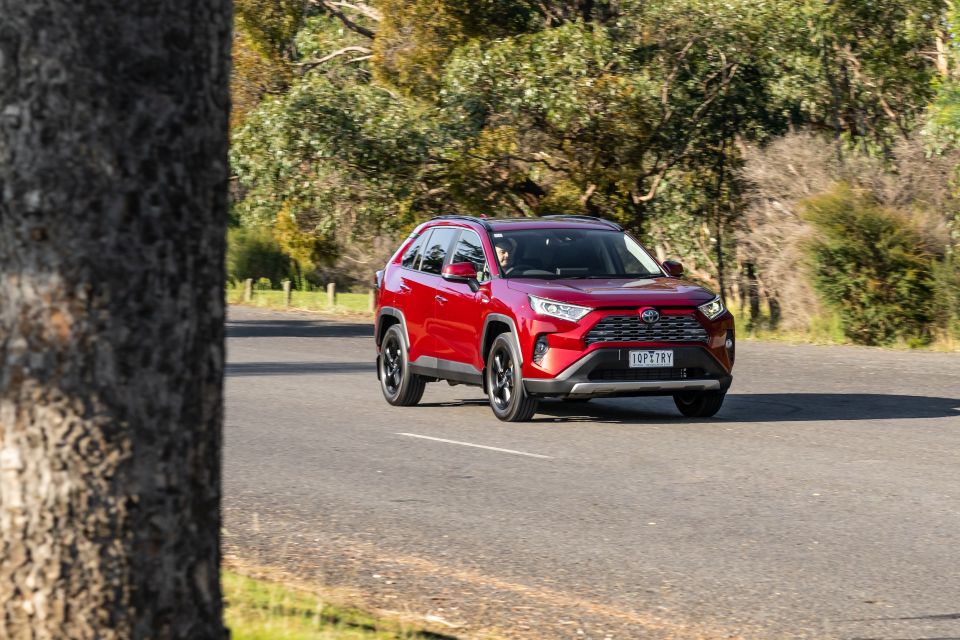
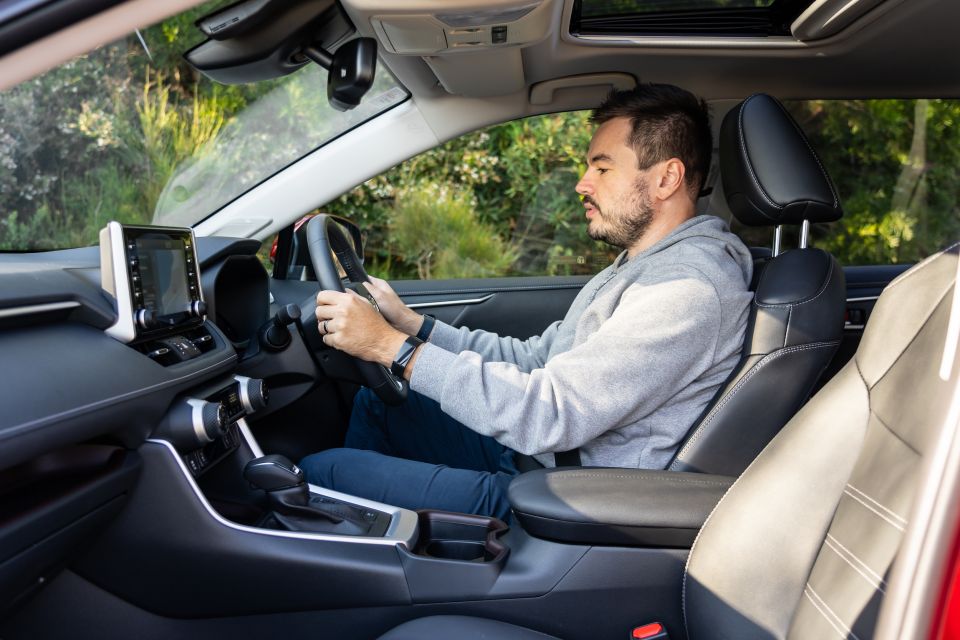
The front suspension comprises MacPherson struts, and at the rear is a multi-link independent setup. Toyota says its decision to reposition the stabiliser bar, dampers, and trailing arms improves the shock absorption.
There’s a new electric motor-assisted steering system with a quicker ratio, and brake-torque vectoring in corners.
The RAV is 4600mm long, 1855mm wide, and 1685mm tall. Its maximum ground clearance is 190mm. At 1550kg, the RAV4 2WD Cruiser hybrid is 70kg heavier than the equivalent 2.0-litre petrol, which isn’t much in the grand scheme.
I think the most impressive aspect of the Toyota RAV4 is the way it rides. It soaks up sharp hits like speed bumps and corrugated roads brilliantly. It isolates occupants on compression and controls rebound well, meaning you’re insulated from the hit and don’t suffer any loss of body control on the other side.
The refinement is also good, with little to report in the way of wind roar past the mirrors or road roar from the tyres, and the hybrid system itself is much quieter and less buzzy under heavy throttle than previous iterations were notorious for being.
At the same time, it’s actually quite agile for a SUV, with actuators braking the inside wheel on turn-in, and the quicker steering ratio and well-sorted handling against lateral loads making this one family bus that you can push through corners.
I kid you not, this RAV4 rides and handles far better than most competitors do. The old RAV4 was rubbish by comparison.

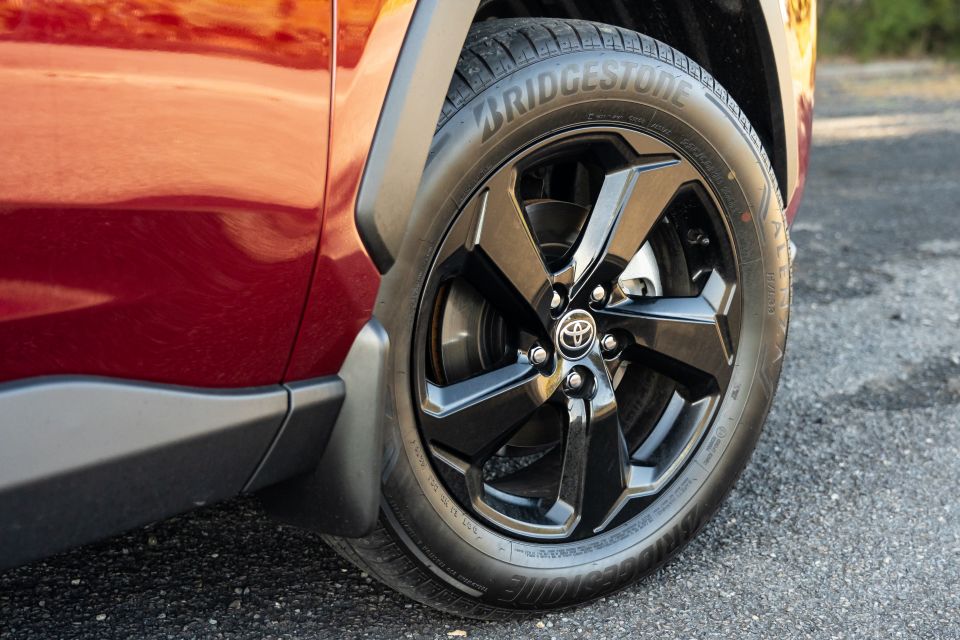
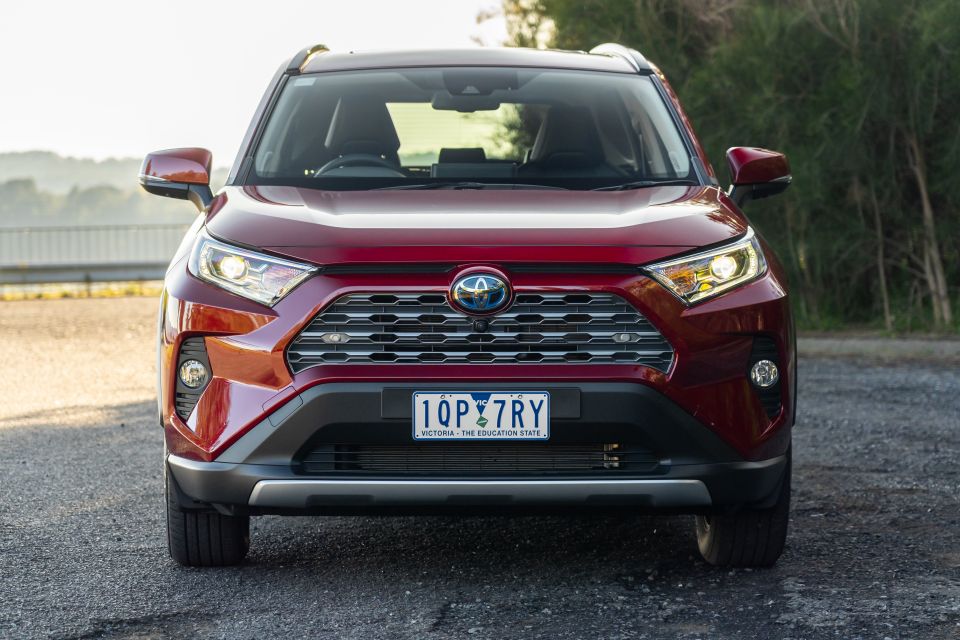
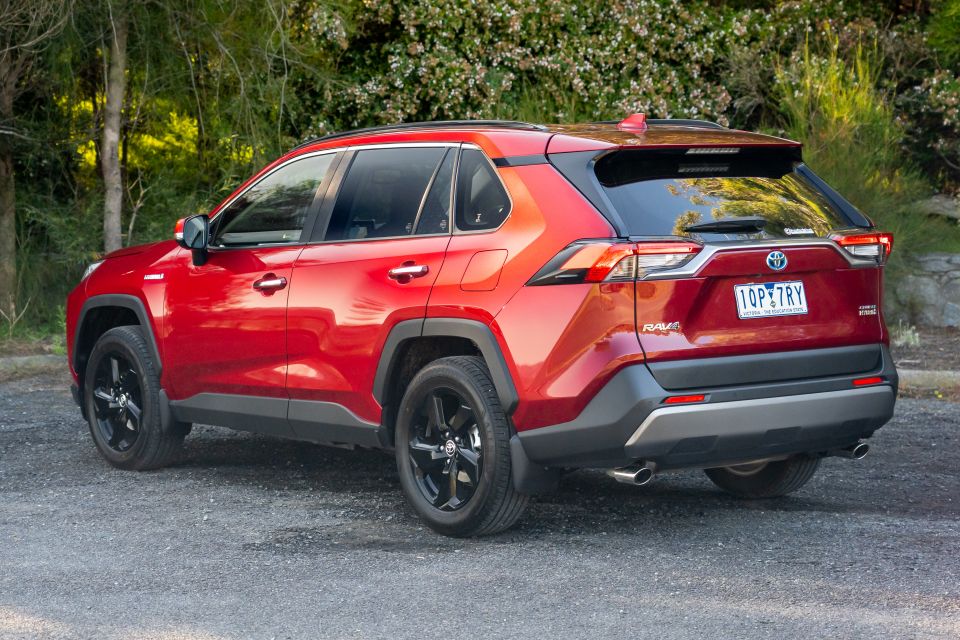
Toyota offers a five-year, unlimited-kilometre warranty, plus roadside assistance.
It also offers capped-price servicing and has the country’s biggest dealer network. Each of your first four visits at intervals of 12 months or 15,000km, whichever comes first cost $215 apiece. That’s highly affordable.
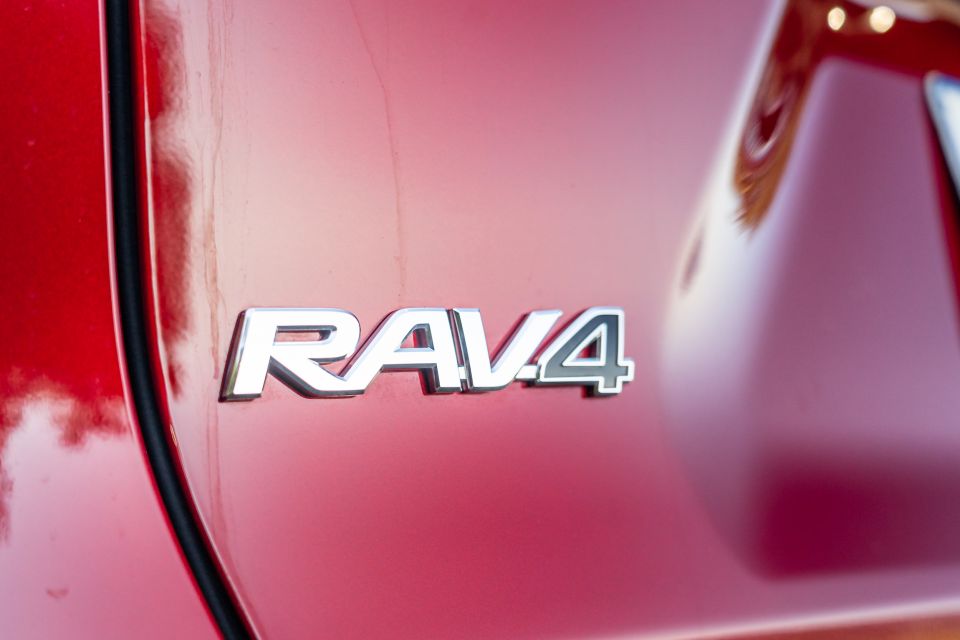
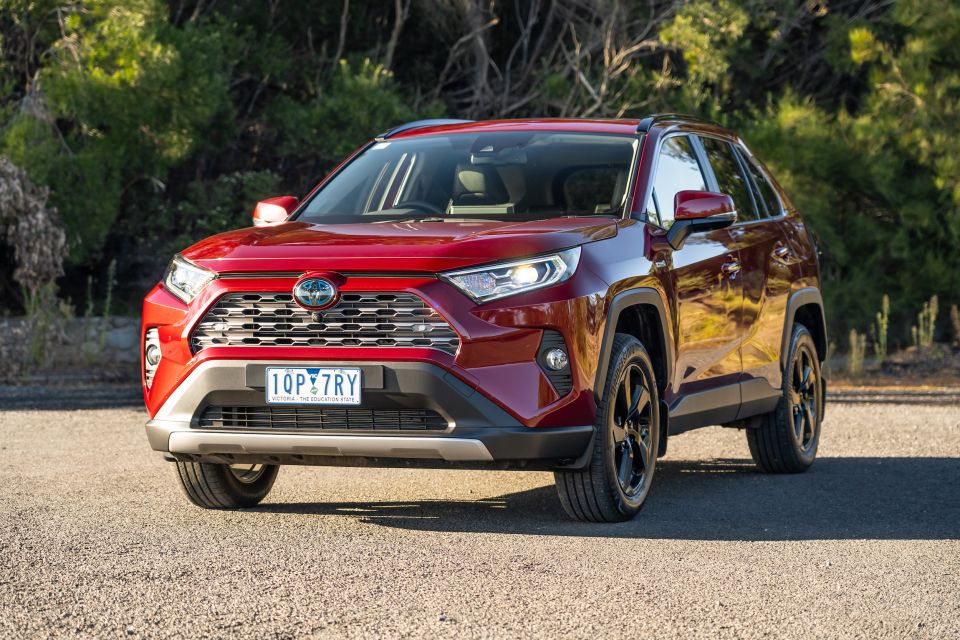
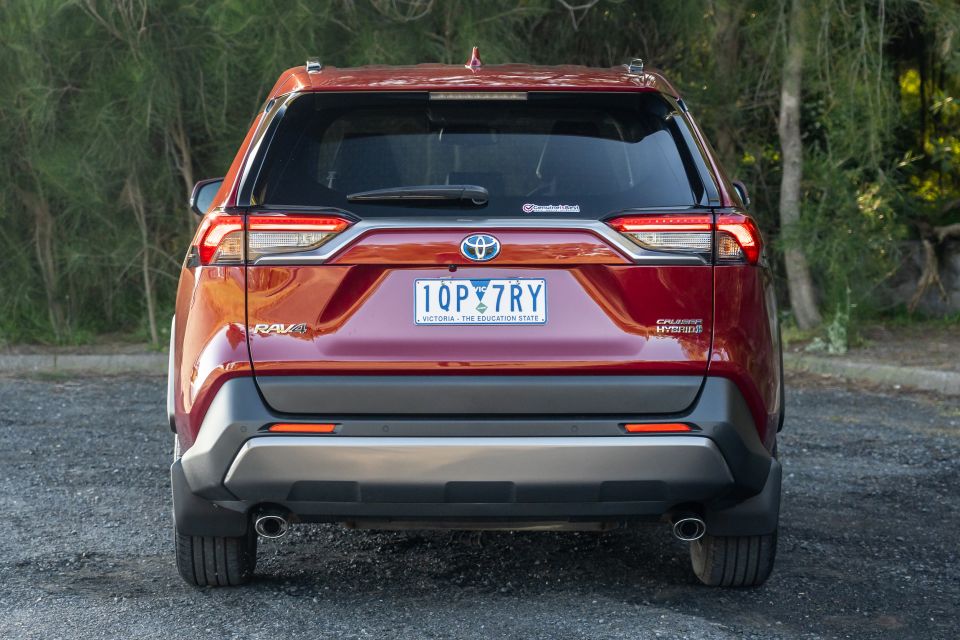
The new Toyota RAV4 is the top-selling SUV in the country, and for good reason. There’s very little to complain about: it’s super-practical, thoughtfully presented, well-specified, great on fuel without being slow, rides and handles better than most competitors, is cheap to service, and even looks the part in a faux-tough kind of way.
As for whether the hybrid is the one to get, consider the following very rough maths. The petrol-electric version costs $2500 more than the regular petrol, which has less power and torque.
Based on official tests the hybrid’s fuel economy means you use 1.8 litres less petrol every 100km, 180L every 10,000km, and 1800L every 100,000km.
Which all means it makes sense financially even before you take into account residuals, which will increasingly favour electrified cars. But more importantly, it’s more refined and faster as well, so ticks the boxes emotionally as well as practically.
The only real disappointment is the fact demand has consistently outstripped supply, which means some customers are having to wait six or more months to take delivery. Clearly this is not an ideal situation and will cost the brand some sales. Once that’s rectified, it’ll be even harder to find fault with.
Where expert car reviews meet expert car buying – CarExpert gives you trusted advice, personalised service and real savings on your next new car.


Max Davies
5 Hours Ago


Damion Smy
1 Day Ago
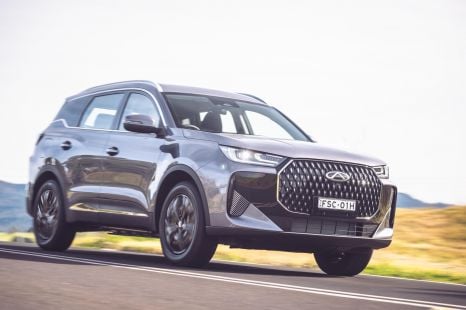

CarExpert.com.au
2 Days Ago


James Wong
2 Days Ago
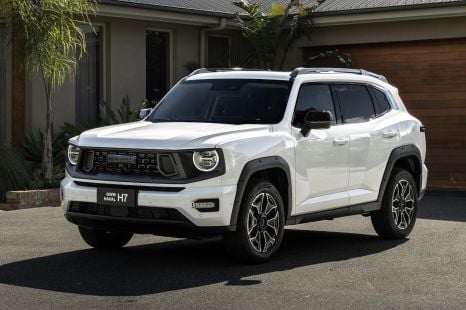

William Stopford
2 Days Ago
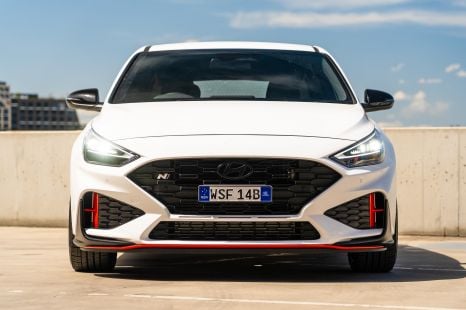

William Stopford
12 Days Ago